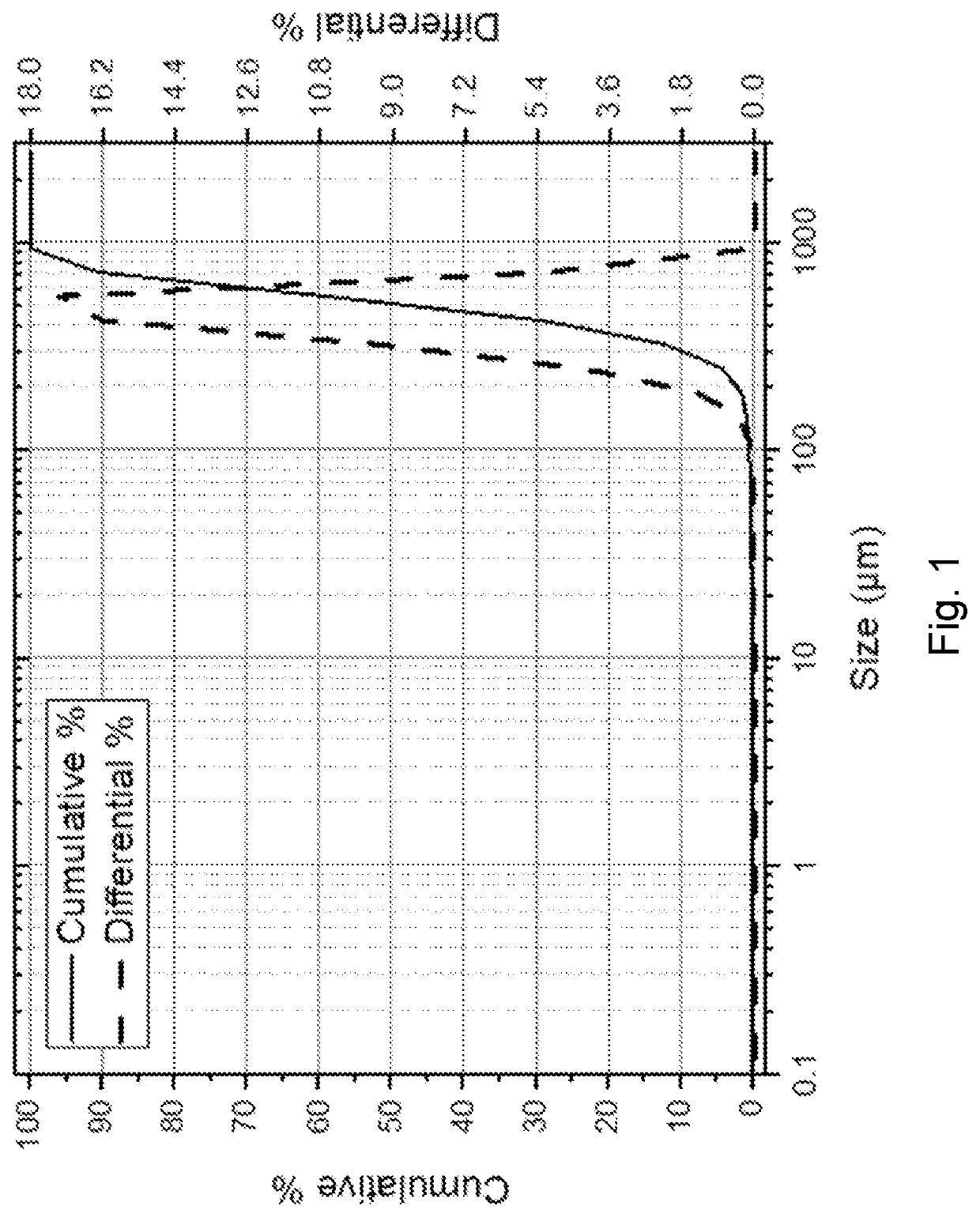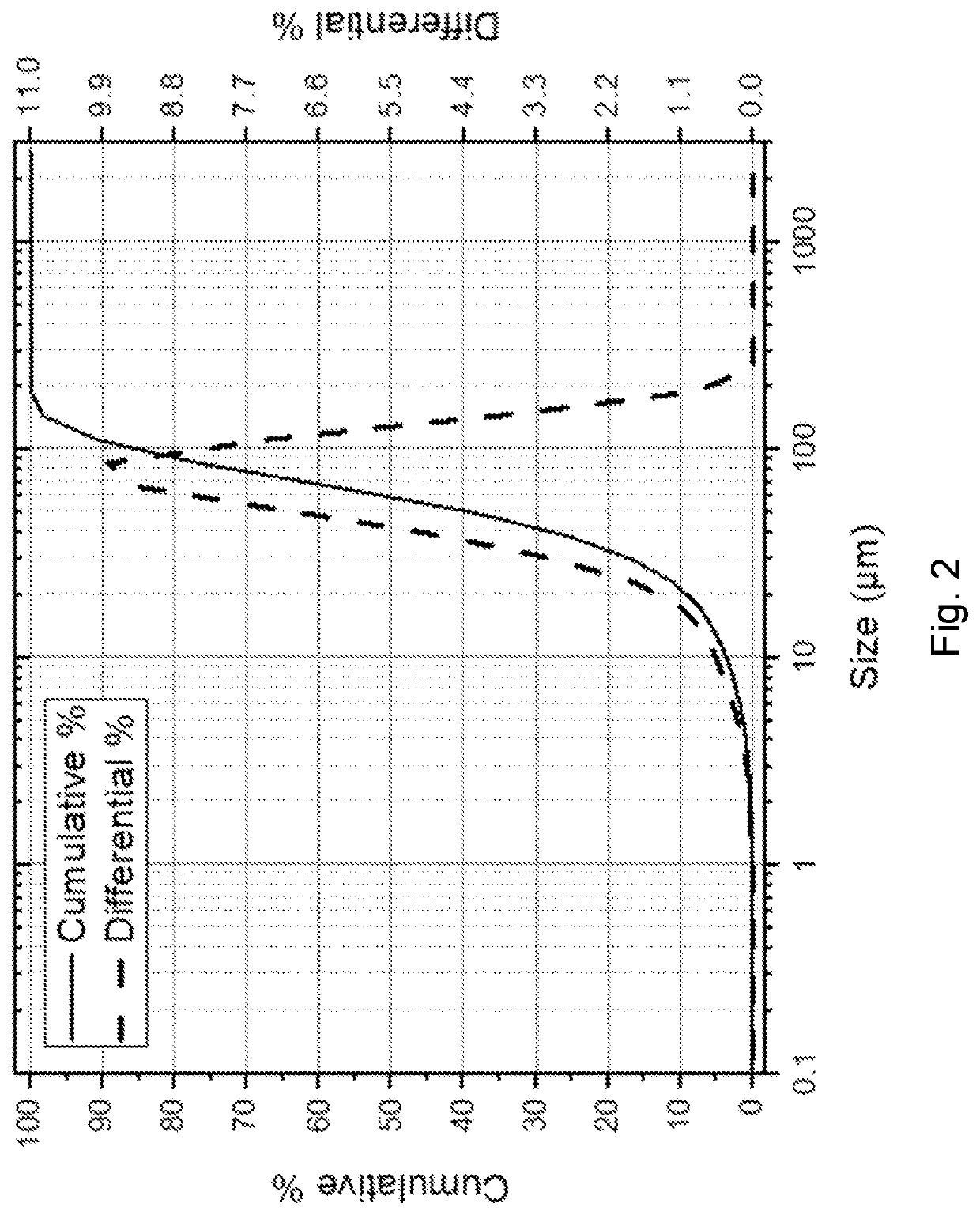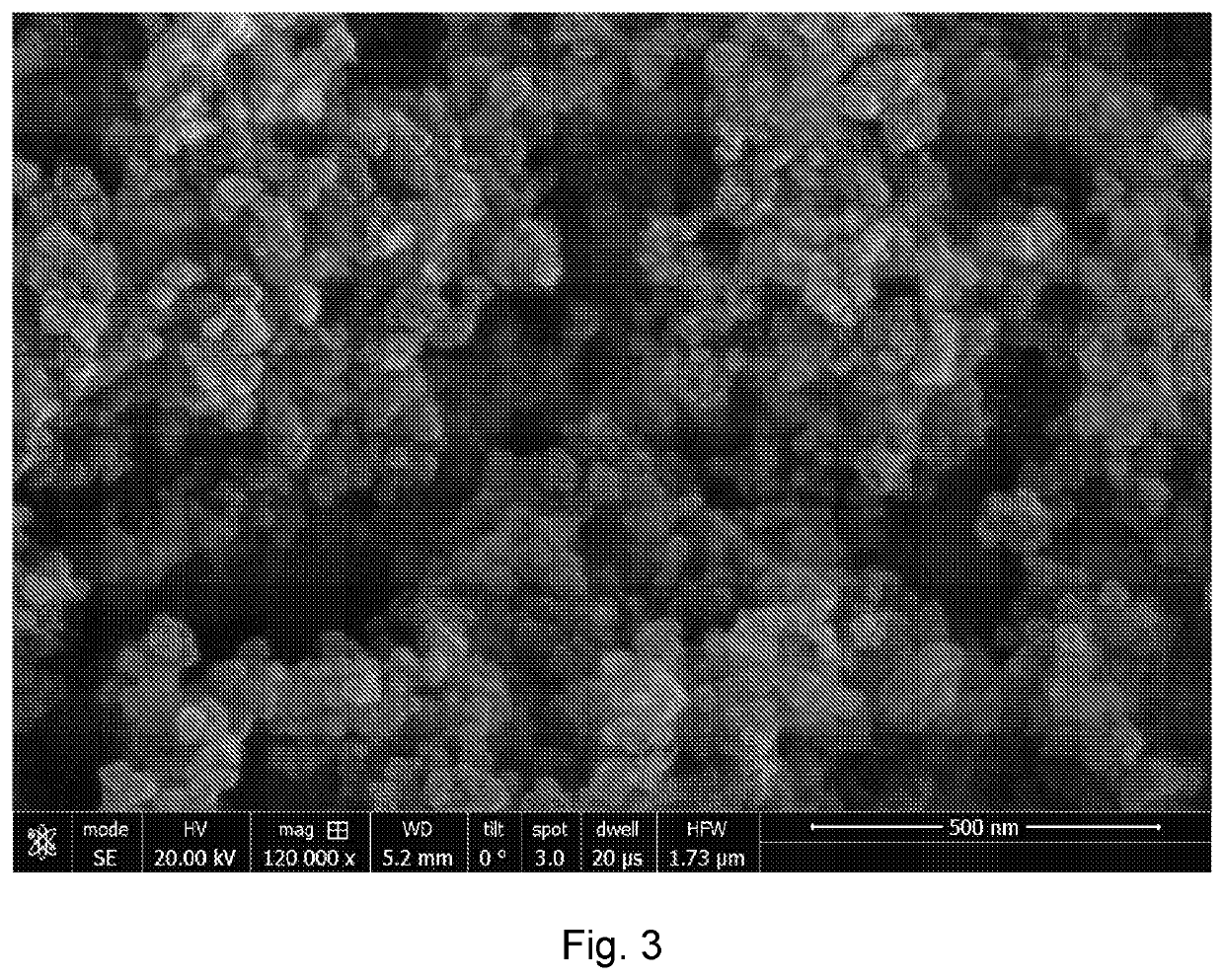Thermal fracture and microcarbon separation of coal particles
a technology of thermal fracture and coal particles, applied in the direction of carbon preparation/purification, direct heating destructive distillation, carbon preparation/purification, etc., can solve the problems of separate carbon type, and no effective way to reduce solid particle siz
- Summary
- Abstract
- Description
- Claims
- Application Information
AI Technical Summary
Benefits of technology
Problems solved by technology
Method used
Image
Examples
example 1
[0064]Sieve analysis was done on the coal particle feed material. Particle size analysis was also done on the material. More than 99% of the mass of the material was greater than 0.355 mm. The material is mixed for a short period 5 seconds with a handheld high-speed mixer in the presence of a non-ionic surfactant to ensure all the particles are separated. Particle size analysis was conducted using a laser diffraction particle size analyzer. The particles have a peak particle size at about 0.5 mm. The average is 0.51 mm with a d97 of 0.795 mm. d97 means that 97% of the particles have a diameter smaller than the size given. The sieve analysis results are reported in Table 1 and the results from the particle size analyzer are shown in FIG. 1.
[0065]
TABLE 1Retained onMass Sieve +Mass Mass Sieve (mm)Material (g)Sieve (g)Material (g)wt. %1.180419.16416.043.121.481.000418.08395.4022.6810.770.600504.40386.81117.5955.840.500410.04366.4843.5620.680.355371.61349.4322.1810.530.250338.62337.870.7...
example 2
[0066]Sieve analysis was done on the low volatile matter and fractured particles. About 70% of the mass of the material was less than 0.5 mm. In order to get a better understanding of the fractured particle size, particle size analysis was also done on the material using a laser diffraction particle size analyzer. The material was mixed for 10 second with a high-speed hand mixer in the presence of a non-ionic surfactant to ensure all the particles are separated. The particles have a peak particle size at about 0.06 mm. The average is 0.058 mm with a d97 of 0.135 mm. The sieve analysis results are reported in Table 2 and the results from the particle size analyzer are shown in FIG. 2.
[0067]The individual particles produced via thermal fracture conditions are smaller than the feed particle to the thermal fracture process. The average particle size diameter for the thermal fracture particles was reduced by nearly a factor of 10 in this example.
[0068]
TABLE 2Retained onMass Sieve +Mass M...
example 3
[0069]The volatile matter of the feed coal particles was measured to be about 33.7%. The feedstock was Pittsburgh 8 coal. Pittsburgh 8 coal is a high volatile matter metallurgical grade coal, meaning in the coking process, it will soften, swell during coal tar evolution, and then fuse together to form the porous long range coke structure.
[0070]After the Pittsburgh 8 coal is used as the feedstock in the rapid thermal fracture and microcarbon separation process described above, the volatile matter of the fractured coal-derived particles ranged between 6% and 9% by mass using a work zone temperature of 1000° C. and a retention time in the work zone of 0.6 seconds.
[0071]It is believed that the coal feed particles heat up so quickly in the rapid thermal fracture process described herein that the fractured solid particles produced in the process do not pass through a softening stage and fusion step as in the case in the much slower coking process. The fractured particles that remain are s...
PUM
| Property | Measurement | Unit |
|---|---|---|
| temperature | aaaaa | aaaaa |
| diameter | aaaaa | aaaaa |
| particle size | aaaaa | aaaaa |
Abstract
Description
Claims
Application Information
 Login to View More
Login to View More - R&D
- Intellectual Property
- Life Sciences
- Materials
- Tech Scout
- Unparalleled Data Quality
- Higher Quality Content
- 60% Fewer Hallucinations
Browse by: Latest US Patents, China's latest patents, Technical Efficacy Thesaurus, Application Domain, Technology Topic, Popular Technical Reports.
© 2025 PatSnap. All rights reserved.Legal|Privacy policy|Modern Slavery Act Transparency Statement|Sitemap|About US| Contact US: help@patsnap.com



